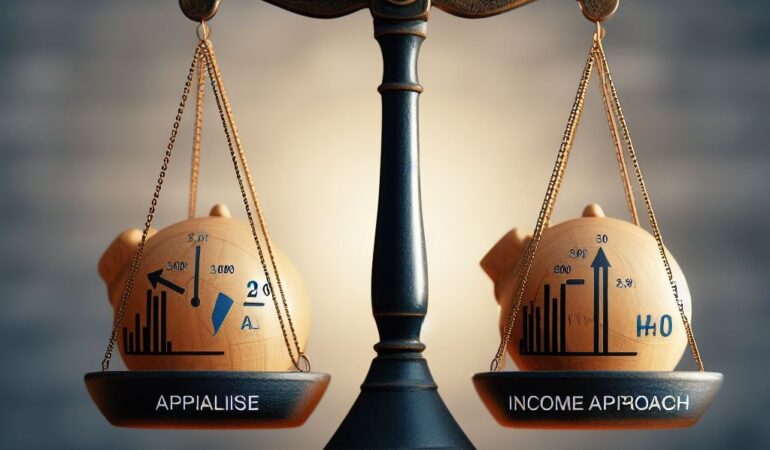Imagine you’re in the midst of a 1031 exchange and need to determine the fair market value of your property. But where do you start?
In this article, we will explore the three best ways to determine fair market value: the appraisal method, comparative market analysis (CMA), and the income approach.
By utilizing these methods, you’ll be able to make informed decisions and ensure you’re getting the most out of your 1031 exchange.
Let’s dive in!
Key Takeaways
- Hiring a professional appraiser is an accurate and objective way to determine fair market value for a 1031 exchange, ensuring compliance with IRS requirements and avoiding disputes.
- Utilizing a Comparative Market Analysis (CMA) is a cost-effective alternative to the appraisal method, providing a fair market value range based on recently sold similar properties in the area.
- The income approach focuses on the income generated by the property, calculating net operating income (NOI) and using the capitalization rate (cap rate) to determine fair market value.
- The advantages of the appraisal method include accurate valuation, IRS compliance, detailed documentation, and potential tax benefits, while the advantages of CMA include cost-effectiveness, detailed market analysis, expedited exchange process, suitability for non-complex properties, and fair market value range provision.
Appraisal Method
To determine the fair market value for your 1031 exchange, you should consider using the appraisal method. This method involves hiring a professional appraiser who’ll assess the value of your property based on various factors such as location, condition, and comparable sales in the area. The appraiser will conduct a thorough analysis of the property and provide you with an unbiased and objective valuation.
Using the appraisal method has several advantages. Firstly, it ensures that the fair market value of your property is determined accurately and objectively. This is crucial for a 1031 exchange, as the IRS requires the fair market value to be used for tax purposes. Secondly, an appraisal provides a detailed report that can be used as supporting documentation during the exchange process. This can help you avoid any disputes or conflicts with the IRS or other parties involved.
It is important to note that while the appraisal method is a reliable way to determine fair market value, it does come with some costs. Hiring an appraiser can be expensive, and the process may take some time. However, considering the potential tax benefits and the accuracy it offers, the appraisal method is often worth the investment.
Comparative Market Analysis (CMA)
For a more cost-effective alternative to the appraisal method, consider utilizing a Comparative Market Analysis (CMA) to determine the fair market value for your 1031 exchange. A CMA is a tool commonly used in real estate to determine the value of a property by comparing it to similar properties in the same area that have recently sold. It provides a detailed analysis of the market conditions and trends, allowing you to make an informed decision about the fair market value of your property.
To conduct a CMA, a real estate professional will gather data on recently sold properties that are similar in terms of location, size, condition, and amenities to the property you’re considering for your 1031 exchange. They’ll then compare these properties to your property, taking into account any differences that may affect the value. This analysis will help determine a fair market value range for your property.
One advantage of using a CMA is that it’s less expensive than hiring an appraiser. Additionally, a CMA can be completed in a shorter amount of time, allowing you to expedite the 1031 exchange process. However, it’s important to note that a CMA isn’t as comprehensive as an appraisal and may not be suitable for complex or unique properties.
Income Approach
How can you determine the fair market value for your 1031 exchange using the Income Approach?
The Income Approach is a method that focuses on the income generated by the property to determine its value. This approach is commonly used for commercial properties such as office buildings, retail spaces, and apartment complexes.
To calculate the fair market value using the Income Approach, you need to consider the property’s net operating income (NOI). This is the income generated by the property after deducting all operating expenses. By dividing the NOI by the capitalization rate (cap rate), you can determine the property’s value.
The cap rate is a crucial component of the Income Approach. It reflects the investor’s required rate of return on the investment. A higher cap rate indicates higher risk and lower value, while a lower cap rate indicates lower risk and higher value.
To determine the cap rate, you can analyze recent sales of similar properties in the market or consult with real estate professionals who have access to market data. It’s essential to ensure that the properties used for comparison are similar in terms of location, size, and income potential.
Frequently Asked Questions
How Does the Cost Approach Factor Into Determining Fair Market Value for a 1031 Exchange?
The cost approach is a method used to determine the fair market value for a 1031 exchange. It factors in the cost of replacing the property with a similar one, taking into account depreciation and obsolescence.
Are There Any Potential Tax Implications When Determining Fair Market Value for a 1031 Exchange?
When determining fair market value for a 1031 exchange, it’s important to consider potential tax implications. These can arise from changes in property value, depreciation, and capital gains, among other factors.
Can You Explain How the Location of a Property Affects Its Fair Market Value in a 1031 Exchange?
When considering the fair market value of a property in a 1031 exchange, it’s important to understand how the location can impact its value. Location plays a significant role in determining a property’s worth.
What Role Does the Condition of the Property Play in Determining Its Fair Market Value for a 1031 Exchange?
The condition of the property is a crucial factor in determining its fair market value for a 1031 exchange. It directly affects the buyer’s willingness to pay and can significantly impact the overall value of the property.
Are There Any Specific Guidelines or Regulations That Need to Be Followed When Determining Fair Market Value for a 1031 Exchange?
When determining fair market value for a 1031 exchange, remember to follow specific guidelines and regulations. These rules ensure an accurate assessment and protect your investment. Stay informed and consult experts for guidance.




